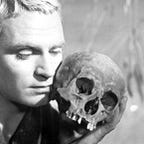Enneagram: The Feeling Triad and Authenticity
The 9 types of enneagram are divided into three different triads. These are the instinctive triad (1,8,9), thinking triad (5,6,7), and the feeling triad (2,3,4). It is with the last triad that I wish to direct my attention to today.
If I had to rename the feeling triad, I would probably call it the image triad. That’s because 2s, 3s, and 4s are all very image focused, although that image is different for each type. 2s want a loving and selfless image, 3s want a successful image, and 4s want a unique image. All three of these types are searching for an image that fits a desired fantasy, while rejecting their true self.
Their concern for image does not mean that these types reject authenticity. The truth is quite the opposite. Every member of the feeling triad is greatly concerned with being true to himself. Unfortunately, each type confuses the true self with an image. For example, 2s really do want to be selfless beyond just appearences. Of course, 2s are not as selfless as they would like to portray. The image creates a standard that the individual cannot possibily live up to.
Rejecting the true self in favor of an image leads to the confusion of true authenticity a with false authenticity. True authenticity compares itself to the self, while false authenticity compares itself to an image of a fantasy self. Because of this, 2s, 3s, and 4s can honestly claim to desire authenticity, while simultaneously rejecting true authenticity.
Since the types in the feeling triad never measure up to their desired image, they experience shame. Am I secretly selfish, secretly a failure, or secretly insignificant? These are the kind of questions the feeling triad faces when they don’t recognize that the image that they seek is a forgery.
In order to deal with their feelings of shame, 2s turn to other people. By convincing others that they are selfless, 2s believe they will become selfless. While this method may provide 2s with temporary solace, it provides no lasting comfort. This also creates further distance between the 2 and true authenticity because it leads 2s to outsource their ability to be authentic to other people.
More than the other types, 3s might not relate to the feeling of shame. This is because the defense mechanism of the 3 is denial. Why should the 3 be ashamed when he is so successful. The truth is that 3s secretly suspect that they are failures, although they don’t admit this even to themselves. 3s falsely believe through successful action, they can overcome their deep rooted feelings of shame.
The issue with many type 4 descriptions is that they make the false claim that 4s are naturally authentic. This is at best only half-true. Although 4s greatly value authenticity, they struggle to obtain true authenticity because of they reject their self. Instead, 4s idolize a fantasy version of themselves, that will never come to pass in the real world. 4s hyper-focus on their perceived flaws to find significance and value as heroes of their own tragedy. The irony is that this focus creates a distorted view of the Self. This distorted view is why true authenticity is so difficult for 4s to achieve.
I end with a word of caution; beware of assurance in false authenticity. None of the enneagram types start their journey truly authentic because each type rejects a part of themselves. 2s, 3s, and 4s obtain true authenticity through a path that begins with self-awarness. This path eventually leads to self-acceptance, as each type in the feeling triad reconnects with the self they rejected long ago.
